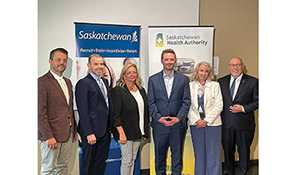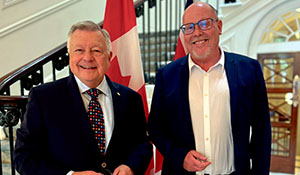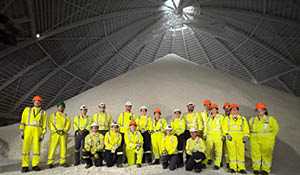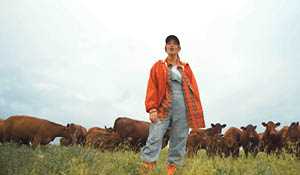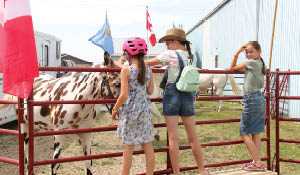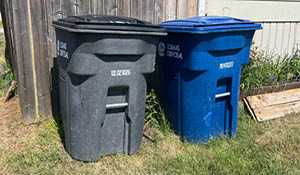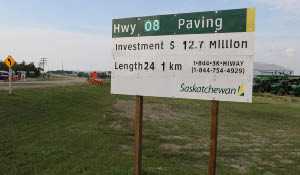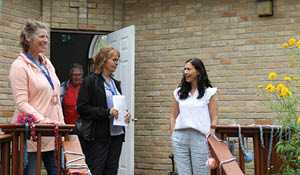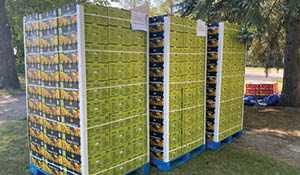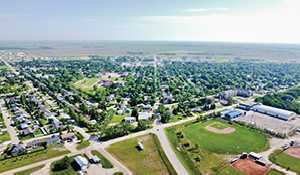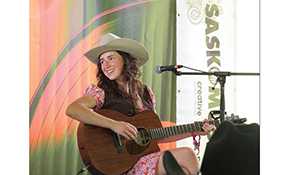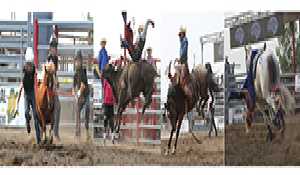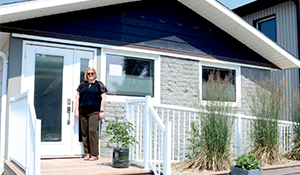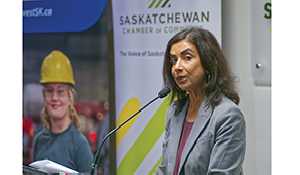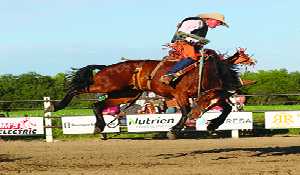Dr. Fallis speaks on her experience in Moosomin as part of the Southeast Residency Program
August 11, 2025, 10:40 am
Ashley Bochek
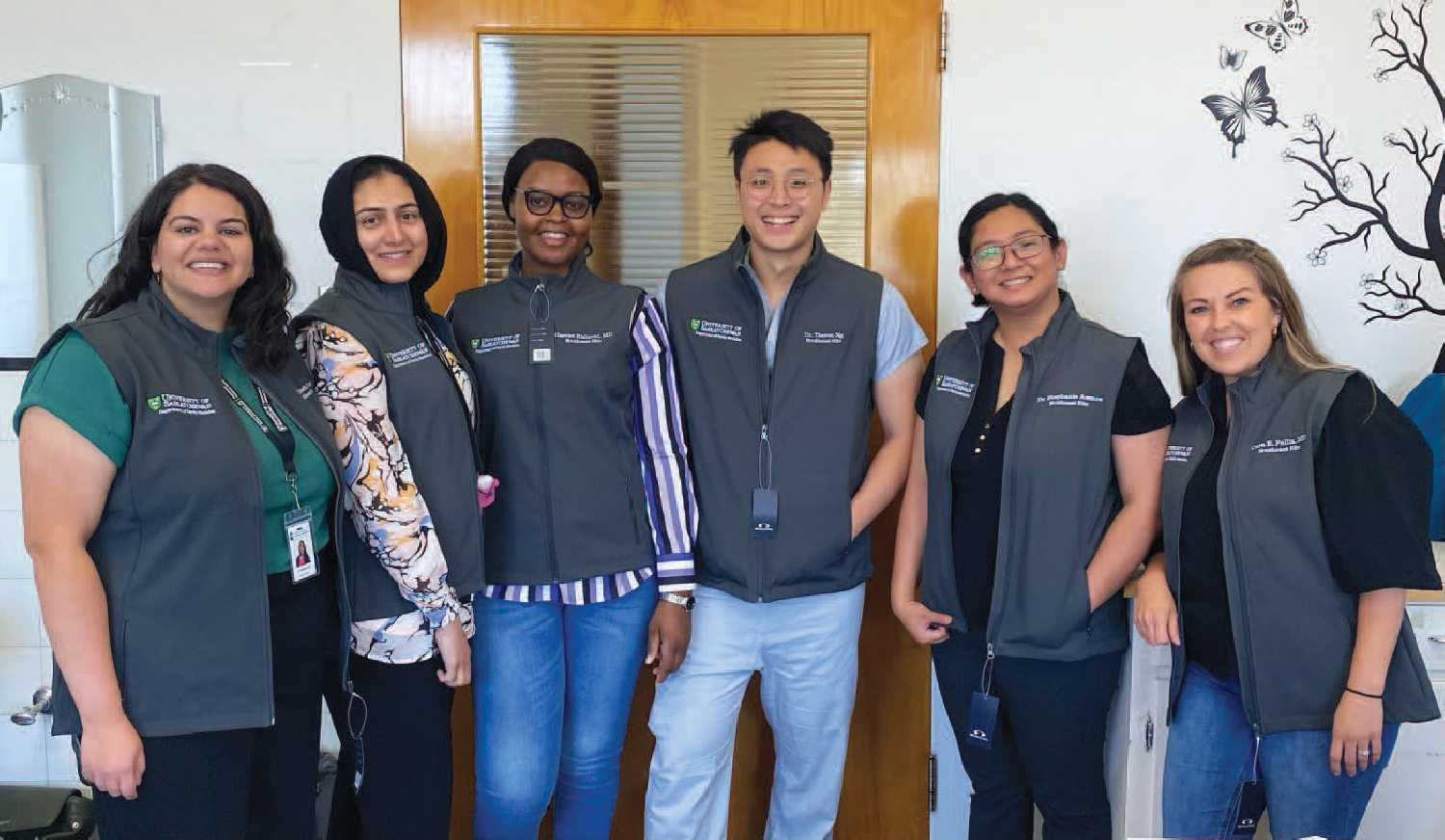

Dr. Cara Fallis grew up in Ontario and completed her medical schooling in the Philippines before coming to Moosomin for her residency training.
Dr. Fallis was the first resident in Moosomin to buy a house, and continue to practice in the community following her graduation last year.
“I am a new family physician in the Moosomin community,” said Dr. Fallis. “I started practice one year ago—July 7, 2024 would have been my first shift in the Moosomin Emergency Department. I did my residency training in Moosomin for Family Medicine Residency, and prior to that, my medical education was overseas in the Philippines. I lived there for about eight years. I worked in a public health capacity as well with the World Health Organization and various organizations in Canada as well.”
She explains her connection to rural living from when she was younger. “My upbringing was in Ontario. I grew up just north of Toronto in a suburb called Richmond Hill. As far as my interest in rural—my family used to spend quite a bit of our summertime two hours north of the Toronto area in a rural community, and I really enjoyed the slower pace, connecting with the outdoors, and that sort of thing. So, rural medicine definitely had an appeal for that reason.”
Welcoming program
Dr. Fallis says during her interview with the Southeast Residency Program, she felt very comfortable with the Southeast interviewer at the time.
“The way that the residency match works in Canada— you put in applications pretty broadly and you’re applying essentially to whatever specialties you’re interested in, and then you have the opportunity to interview programs. Essentially they give you an interview and you’re interviewing them as well because at the end of the interview process the next step of the residency match is a rank order list.
“I was interviewed by Regina alongside the Southeast Residency Program. The doctor who had interviewed me has now left the community, Dr. Theathi, and I just felt that interview was much more comfortable. It felt like ‘Oh, this is somebody I could live and work around, or learn from.’ I felt like the Southeast Residency Program was an easy choice for me.”
The Southeast Residency Program encompasses three communities in Saskatchewan.
“Within the Southeast Residency Program there are three sites, in Moosomin, Humboldt, and Weyburn,” she explained. “Between those three sites my husband and I did research about the different communities and we noticed a couple of things stood out.
“The slogan for Moosomin was ‘Strength in Diversity’ so we felt that seemed welcoming. For myself, I looked at geographically where it was in relation to different reserves because I am interested in serving the Indigenous population and learning about that community, and Moosomin just seemed like the right fit. So, I submitted my preferences to Dr. Foy who is the director in Moosomin for the Southeast site. It was between Weyburn and Moosomin for me.”
She explains their connection to the Filipino community, “I did my medical training in the Philippines and my husband is half Filipino so we looked and saw that Moosomin had a very large Filipino community, but I think it is very true of a lot of communities in Southeast Saskatchewan that there are Filipino communities growing everywhere. It is important for us, my husband plays basketball, and when we were looking online there was a Filipino basketball tournament in Moosomin that came up in one of the first Google searches.”
Dr. Fallis says the Town of Moosomin and Saskatchewan weren’t originally the plan when deciding her medical residency.
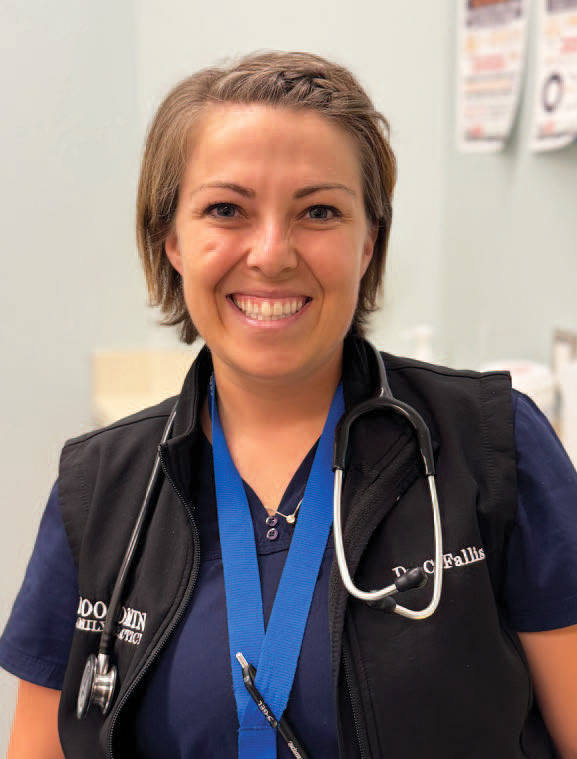

“Moosomin wasn’t on my radar at all. I had never heard of the Town of Moosomin. Later on down the road, I started talking to different people of where I am living, and it turns out there were actually several people that I knew who had heard of Moosomin. A friend of mine from high school had actually worked at the Rocanville mine about five years before we moved out here. Then, as far as Saskatchewan, it is not a matter of ‘Oh, I would never see myself living here!’ I am pretty adaptable. I don’t really close my mind to living anywhere in particular.
“It was not in the plan necessarily, but upgrades and transfers to residency opportunities that seemed really welcoming and then with a training environment—you don’t get paid a lot of money in residency training so affordability for a family I think you can achieve that better in Saskatchewan for sure than other provinces.”
Exceeds expectations
Dr. Fallis says the communal aspect surpassed her expectations for the community.
“For the residency program, I don’t really know that there was a whole lot that I knew or didn’t know what was going to happen. In terms of the Family Medicine Residency, the curriculum and things you need to learn are fairly standard so a lot of that was to be expected, but what I didn’t expect is that you never really know the quality of mentorship that you’re going to receive and the relationships you will build with your allied health professionals such as nursing staff, physiotherapists, social workers—so all of those relationships have been really pleasant. I’d say that has been for sure the highlight of living in the community and having done my training here.”
“I try not to paint too much of a picture before going somewhere, but also what I don’t think I would’ve expected is that there is so much going on in terms of events happening all the time, recreation opportunities, different fundraisers, it is a very active community. There is always lots happening and I think coming from bigger cities where I have lived previously, I was surprised of how much is going on. I didn’t expect there to be constant events and things to look forward to.”
Rural living
Dr. Fallis says she enjoys the convenience of living in a rural community.
“Definitely from the perspective of traffic—you don’t spend any of your time on the road fighting traffic here which I love. I love being able to be so close to where I work so I think that is unique.”
“Also, a lot of places where you will live that are bigger, especially in medicine, your patients are sort of an anonymous entity, but in a rural community or a town like Moosomin you get to know who you’re treating as patients just as people outside in the community—people you may just interact with at the grocery store or the bank, your kids’ teachers, so that is definitely very unique and hugely different from a city centre. I think again having those really close relationships with all of my working colleagues because everybody you know, you expect you’re going to get to see people outside of work so those relationships you’re building at work translate into just your community interactions as well, and I think in a bigger centre it is sort of show up, do your job, clock-in clock-out, sort of thing and not catching up with colleagues later.”
She says her parents enjoy visiting Moosomin as well. “My parents bought a place in Moosomin. They do have their home base in Toronto still, but last year they spent quite a bit of time in Moosomin like three months at a time they came and they did that a few different times. They’ve spent a lot of time in Moosomin and for them, the draw is very much the fact that they only have one grandchild and he is here, but it is a very walkable community, easy to commute around, and if you need health care it is very available which is nice. My parents have found that it has been a very easy community to get acquainted with socially as well—they have both gotten involved with pickleball and my dad has some golf friends, so from a perspective of recreation opportunities they felt it is very nice and easy for them. So it honestly didn’t require a lot of convincing just to be close with their family.”
Great mentorship at Southeast Residency Program
Dr. Fallis explains her reasoning for staying in Moosomin to continue practicing medicine after completing her residency.
“There are pros and cons everywhere you live, but as far as the start of practice for me, all of my reasons are pretty strategic. I don’t think it makes a whole lot of sense to uproot your family every year to change your practice location. In medicine you never stop learning, there is always new research coming out, and practice updates. So being surrounded by people where you don’t feel like an island— if I need to tap one of my colleagues on the shoulder because I have a patient that is still going to be admitted in the hospital and I want to go on a holiday or I don’t know the patient very well, but has been a patient one of my colleagues have taken care of in the past, then my colleague will know their case very well—that mentorship opportunity and that continuity of care I think is pretty unmatched compared to other places during my training.
“Dr. Van, Dr. Roets, Dr. Kerkhoff, and Dr. Erica, they all did a really exceptional job. I don’t think it was because they were trying to get me to stay, I think it was honestly, they were just very nice people. They did a really good job making me feel really welcome and part of the team. When I was there training, obviously, I am their junior and I still am, but they never really made me feel like that—like up the authority chain. I always felt like I was part of the team and I think that being in place so early just made it seem like my entire residency was a training period to stay in Moosomin for whatever period of time.”
She says her family enjoys living and being part of the community, “I think it was a really smart decision for me because I didn’t have to do all of the relearning of all the referral pathways if I were to leave for somewhere else. There is a lot of stuff that isn’t just medicine that you have to learn too, and that all kind of got removed from the equation by me choosing to stay in Moosomin. My family was already preestablished here and we are thinking around grade 5 when our son is transitioning to high school maybe that will be a time where we think about the next step, but he has gotten really comfortable with the community and the teachers. They have made him really feel like his learning is a priority and I think a lot of places in the big city you may just feel like your kid is another number, and it is not like that at all here.”
Becoming a doctor
Dr. Fallis says she enjoyed science growing up which influenced her decision to become a doctor.
“Long history of being interested in communicating with people, wanting to be on my feet, problem-solving. Back in high school it was around grade 10 that I started to be interested in the human body, anatomy courses, there was a nutrition unit that we had to do in our Biology class, and there was a dissection project we had to do so there were a lot of things at the grade 10 level that made me interested in health, and as I progressed further through school it felt that medicine was the perfect balance between that social part of my brain and the scientific side of my interests. I enjoy confidently being able to be dynamic, learn, problem solve, and medicine offers that every day.”
The Southeast Residency Program
Dr. Fallis explains how the Southeast Residency Program in Moosomin operates.
“Dr. Foy who practices in the community as well, she had been the Southeast site director. There is a site director at each site so in Moosomin, Weyburn, and Humboldt, and they operate as one entity. There is the Family Medicine Residency as a whole which is for all of Saskatchewan. There is a total of eight Family Medicine Residency sites and our one site is broken down into three. You start around July—at the beginning of July every year there is a new cohort of residents coming in—then through the residency you’re assigned to different specialties. In Moosomin, we only have Family Doctors working so we will do a lot of our training just in what is called the Family Medicine Block—which means you’re doing your bread-and-butter family medicine, clinic, office-visits, and learning how to manage conditions across the board from well-baby care to beginning-of-life all the way to end-of-life care, in palliative care settings, and then you also have hospital-based medicine that is part of the Family Medicine training in the Southeast. So that is our emergency medicine, our in-patient medicine, and then we also cover the long-term care.”
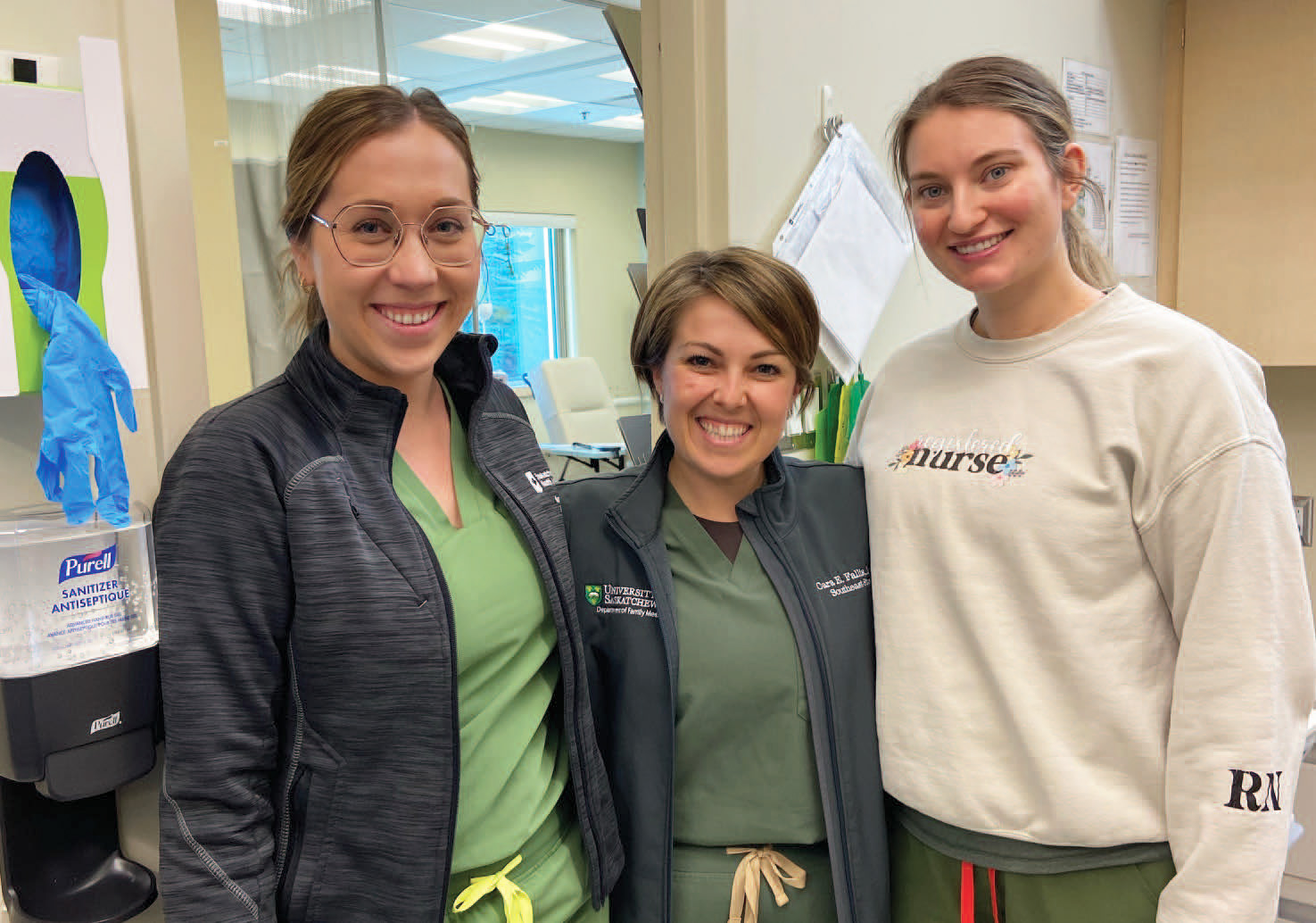

“So it is really learning through the life course all the different conditions that you are going to have to be acquainted with. The residents, you have a combination of being very responsible toward the end of your training—at the end of your training you will pretty much be seeing patients independently. The patients will kind of be considered your own, you will schedule a follow-up with them, look at all of their labs for imaging, you will come up with the plans, and whoever your preceptor doctor is will sort of give you a review and a head nod. At the beginning of your training, your alongside a preceptor doctor who you will work with for any given day, and basically you will have the opportunity to see the patient yourself, chat with them, take your medical history and physical examination, and then get your idea of what you think is going on and come up with a diagnosis and plan that you will discuss with a preceptor doctor and then that physician will give their suggestions or input, and you go from there. So that is the transition as you go from junior to senior level of residency.”
Residents experience specialty learning in bigger centres throughout their residency program training.
“For the part of the residency training when you need to learn specialties more directly we went to Yorkton and Regina just for a combination of seeing obstetrics and gynecology, anesthesiology, surgery, and learn a bit more of that skillset, but also that opportunity to build rapport with specialists in those areas—makes it a lot easier for us when you’re back in Moosomin working like I am now when you have to pick up the phone and reach out to a specialist by the provincial call system that sometimes the person on the other end is someone you have worked with when you did those specialty rotations so that’s also part of the learning experience and the advantage of doing those rotations when you are out of Moosomin,” said Dr. Fallis.
No regrets training in rural community
Dr. Fallis says she has no regrets training in Moosomin as part of the Southeast Residency Program.
“One hundred per cent I am happy I took my training here in Moosomin. As far as when I look at a lot of my cohort—I don’t want to knock any other residency training programs because I think every program will have the things it does really well, and the things that they don’t do as well—if you could compare the residents that trained rural versus the residents that trained in a city centre, the level of confidence in managing such a variety of conditions that I feel in comparison to my cohort that trained in other places—I think training rural offered a lot more independence, autonomy, and challenge a lot sooner, and that is probably just that you are getting that one-to-one mentorship so people are trusting you sooner to manage more complicated things and then you have all that time to just sharpen and fine tune those skills, but you are so close to help if you need it. You can really push yourself to learn as much as you can. Where I think, if you are training in other places with specialists at your fingertips a lot of things that we manage all of the time in rural settings as family doctors, it just very easily gets passed off to a specialist to manage when you are training in a city.”
Dr Fallis said she believes her residency experience gave her the skills she needs for her career in medicine.
“I am very happy with my skillset I gained in training rurally and I think going back to the practicalities of life—the fact my entire day—my commute didn’t take any time out of my day, that makes it easy too to get home and do the extra studying that you need to do to learning all that you possibly can in a very short training period of two years.”
Retaining and recruiting physicians in rural communities
Dr. Fallis lists some advantages to help rural communities retain and recruit physicians in Saskatchewan.
“It is a really challenging thing. Truly, there are lots of people writing articles and researching about this problem. I think it is multifactorial for sure. A lot of young doctors coming out of their schooling—like you’re in a bit of a financial hole. So financial incentives are really important helping people get out of their debt, that is really important, but I think a lot of places are doing that still, and yet they are not able to achieve the retention they are looking for.
“So I think that mentorship piece is really huge and it is tough to do that if you don’t have doctors that are staying— those doctors that have been around for a long time in Moosomin have created this unique situation where we can retain people because we have good mentorship, but if you didn’t have that because you’re having a hard time retaining people then how do you ever have that mentorship available to newcomers.”
“I think that the South African immigration to Canada was fortuitous for Moosomin and I don’t know if that is something that can be easily replicated, but the things we can control are what’s the fertile ground that the person falls upon right, are there are opportunities for kids to have daycare, are there recreational opportunities, social opportunities, if you need some help with finding a place to live, or buying a car, having organizations within the community that can help you do that, and I felt the Moosomin and District Health Care Foundation was exceptional for doing that for me, so I think having a health care foundation in place is a very important part for recruitment and retention.”
Businesses welcoming doctors with cultural significance can provide comfort during their residency. “From the cultural perspective too, when you have doctors coming from a lot of different places in the world, just making sure that welcoming—things like the grocery store having lots of different foods available, like niche items—the Moosomin Co-op Grocery store looks a lot different from when I arrived a couple of years ago just even the products that are stocked, just get the things that make people feel like they’re at home,” said Dr. Fallis.
Long term retaining and recruiting in Saskatchewan
Dr. Fallis says rural residency programs are still in their infancy, and it’s too early to tell how much impact they will have on rural recruitment and retention.
“I think that is probably one we can continue to research because anecdotally, you may hear the answer yes, but in practice it varies,” Dr. Fallis said. “In our residency training program we have had myself stay and then we just graduated another cohort and that resident decided not to stay. It is yet to be determined if they come back and help say in the emergency department on an ‘as needed basis’. I am one who has stayed. I am not sure if all of the other communities in the rural programs in Saskatchewan would say if they have had the experience of 50 per cent, 100, or 25 per cent staying, but from what I could see from Prince Albert they did have some residents stay, La Ronge had some residents stay, so I think that it is a gamble, but probably one worth taking because truly I think everybody does benefit from having residents in the community in the fact that, resident doctors are new, young, fresh, and not jaded. They ask all of the questions that make the seasoned doctors keep all of the little nitty-gritty details at the tip of their fingers. They are also not burnt out at all in that early stage of training. They come with an excitement and empathy that I think probably does change the longer you are in practice. Having residents I think serves patients very well, and I think it also creates that opportunity for continuous learning for the doctors who are later in their careers as well because the doctors that are more junior coming here will probably be more aware of the latest research. For both sides—the community side and resident side, and the physician side of established physicians—it is great to have residents in the community.”
Provincial incentive programs
Dr. Fallis explains the province’s commitment to retaining and recruiting physicians in rural Saskatchewan.
“The SHA (Saskatchewan Health Authority) and SMA (Saskatchewan Medical Association) they are doing a lot with respect to reimbursement programs and different incentives that are not only monetary, but also support, that are making that attempt to help people to stay so it’s not what the Southeast program can do to help people stay, it’s also what are other programs available in the province are doing. I think there are a lot of important efforts going on, but then again, every single province is doing the exact same thing because there is a health care shortage everywhere in Canada. I think what is going to be the difference is what’s the answer to whatever recruitment tactic is going on in Ontario and BC because those are the provinces that draw a lot of health care workers out from Saskatchewan. We need to have a good strategic plan.”
Exceptional experience training at Southeast Integrated Care Centre
Dr. Fallis says she has no regrets completing her residency training in Family Medicine here in Moosomin.
“I had an exceptional experience with no regrets, so the Southeast Residency Program has done a great job. I think even the residents who come through the program and decide to stay, they don’t have anything but high praise for the Southeast Residency program so it’s really a ‘good job, keep it up’ kind of thing from my point of view, but also keeping a residency training program going is such a huge amount of work so we definitely have to keep up the enthusiasm and show that appreciation as best we can to keep everyone motivated.
“The disadvantage rurally would be feeling disconnected from those specialist relationships so I think you have to try harder to establish rapport when you are doing those phone call conversations with specialists and really take advantage of the opportunities for electives and to get to know as many people as you can. Then, a lot of specialist referral pathways is just knowing MRI wait times in places over others, you might get a better finger-on-the-pulse for those things if you trained in the city. That is probably the only disadvantage. Then, for the life perspective if you are not someone born and raised in the community where you are training and you want to visit family and friends elsewhere, training rurally you are two hours to the Regina airport or three and a half hours to Winnipeg. Those would be the only disadvantages I can think of. I can really only think of positive things for doing the training here.”
Currently there are three residents in the Southeast Residency Program in Moosomin. Including two who just started in the residency program this July. Tweet

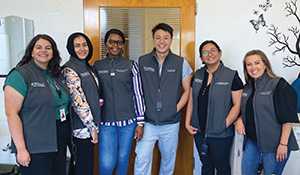
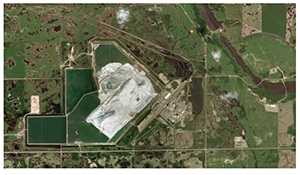
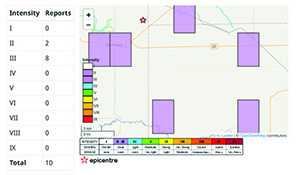
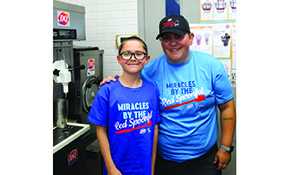
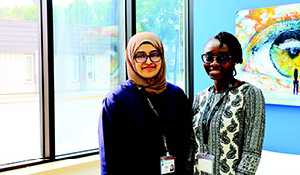



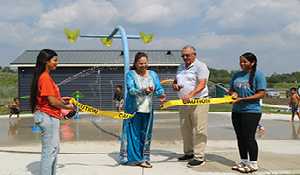
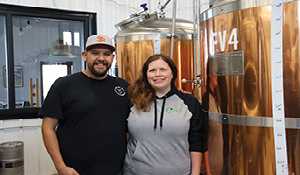
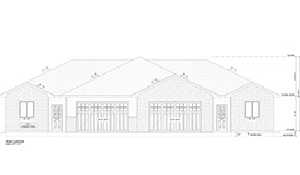
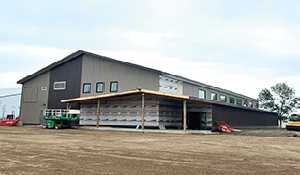
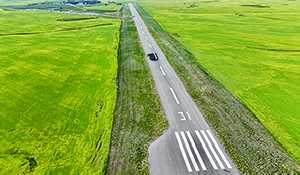

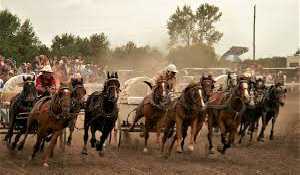
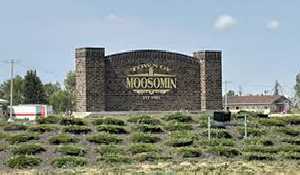
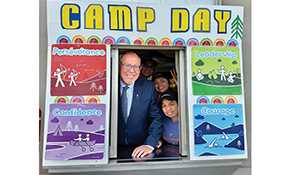
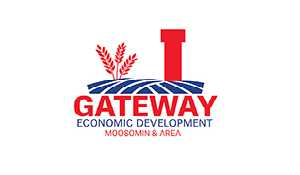
sm.jpg)
